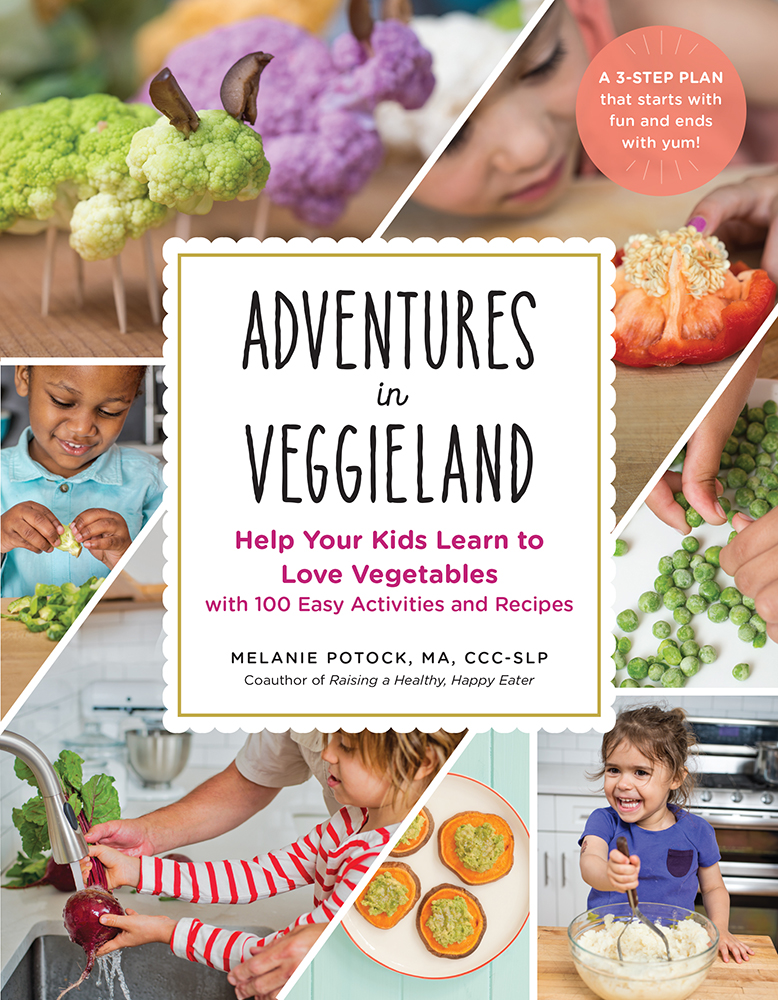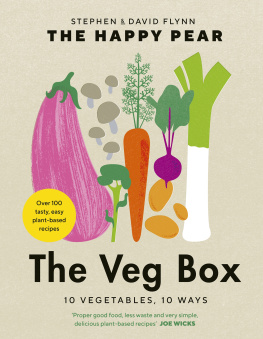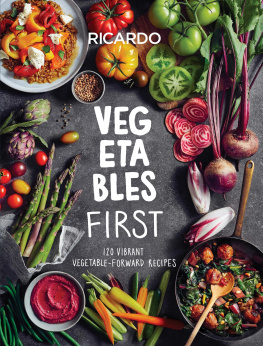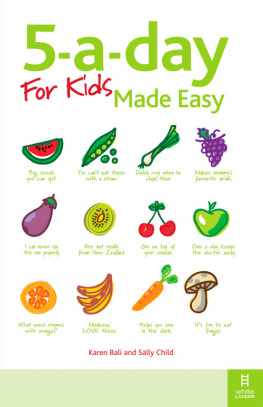
INTRODUCTION
How to use this book
Where do I start?
First, answer this question: What season is it? Turn to that chapter and thats your personal starting point. Youll find that the winter, spring, summer, and autumn chapters each highlight five seasonal vegetables. Youll learn strategies to expose children to the unique sensory aspects of that vegetable via crafts, cooking, and science, and youre on your way.
How about an example?
In the winter chapter, the first food you will encounter is beets. They feel rough and are often encrusted with garden dirt, until we wash and prepare them for mealtime. The subtle and sweet aroma drifts through the air as we peel the beets of various colors and have fun making temporary tattoos with beet juice. Well learn how to clean off our stained fingers with a surprising tip from top chefsbut youll have to read that chapter to learn the secret! Later in the week, or whenever youre ready, well begin to explore the taste and texture of fresh beets with two very different recipes to ensure that your child experiences the flavor in different ways. Later on, well begin to expand our palate with a beet recipe thats more adventurous, with an unexpected twist. Finally, well top off our beet adventure with a sweet treat that incorporates this colorful veggie into a yummy dessert. Be sure to include your child in the entire process, from washing to prepping, chopping, helping to push the buttons on the food processor, and even decorating the plate for a lovely presentation.
You have just used the Three Es: Youve exposed your childs entire sensory system to beets, introducing new aromas, tastes, and textures via food exploration, plus youve expanded his diet to include tasting five new beet recipes. Will he absolutely love beets at the end of this? Yes, possibly, and at the very least hell have made friends with beets and be just fine with them coming to dinner.
Be amazed as your child experiences the joy of new foods and proud as his confidence grows while your family ventures through each chapter! Youll discover that hes more willing to interact with and taste a variety of new foods, including vegetables. Thats the goal: a child who is adventurous and willing to try almost any new food, especially the healthy ones.
But it sounds like a lot of work!
Each recipe is designed to be quick yet interactive, so that you and your kids have a good time in the process. As you continue through each season, return to some of the recipes, make them again with your child, and keep presenting the vegetable in a variety of ways. The key to kids accepting and loving new vegetables is frequent exposure in a positive, fun, and experiential manner. Its about building familiarity. Thats how we all learn to love new foods over time. Spending a bit of time in the kitchen with your kids, a few times a week, has incredible benefits for you and for your child.
Seriously, whats the payoff?
The facts speak for themselves. Your child may grow to be healthier and smarter and make safer decisions in his teen years. Research shows many benefits from teaching kids to prepare healthy food and eat adventurously, as shown in the following pages.
The Science Behind Expose
Over twenty-five years ago, when I was trying to encourage my own very picky toddler to try vegetables, I never knew Id be developing a system to help other parents in the same boat! I had not heard of the science behind exposure to new foods and the importance of gardening, cooking, and playing in food together and did not embark on my career as a feeding specialist until many years later. As I watched my toddlers anxiety rise every time I presented something new on her plate, two things became very clear to me: (1) This was going to take time, and (2) I had better make it enjoyablefor both of us! It wasnt until I was in graduate school many years later that I became interested in pediatric feeding and began to pore over the science that shows how to raise healthy, happy eaters. My instincts were right.
Lets get down to the basics first: How many servings of vegetables should a child eat each day?
According to the Academy of Nutrition and Dietetics, kids need two to three servings of veggies per daybut the size of a serving will be different depending on whether the child is a toddler, a preschooler, or elementary age. Some guidelines offer serving sizes based on cups, but since vegetables come in all shapes and sizes, it can be hard to figure out what a cup means.
The following easy visual might help you remember how big each serving should be: Picture a large eggthats a volume of about 1/4 cup. Picture a tennis ballthats 1 cup. Now imagine the recommended serving sizes for children of different ages in terms of eggs and tennis balls:
- Toddlers get 2 to 3 large eggs of vegetables per day
- Preschoolers get 2 to 3 half tennis balls of vegetables per day
- Elementary school kids get 2 to 3 whole tennis balls of vegetables per day
Just picture your kid with either an egg, a tennis ball cut in half, or a whole tennis ball in his hand. Thats his serving of vegetables, two to three times each day!
Overexposure to Fast Food
Sadly, nine out of ten children in the United States dont eat enough vegetables, according to the Centers for Disease Control and Prevention, and of the veggies that kids do like to eat, french fries and chips were the most popular.
But dont all kids love fast foodand is it really that big of a deal? Yesand yes, because kids are eating more fast food than ever, much more than twenty years ago. Children who eat fast food consume more saturated fat, more total fat, more carbohydrates, and more added sugars. They consume less fiber and more calories overall. In fact, kids will eat more calories throughout the day because of that fast-food meal, in addition to the many calories in the meal. Research shows that eating fast food causes kids (and anyone) to crave the salty, fatty comfort of foods like french fries throughout the entire day.
Poor nutritional health may lead to poor brain health, and kids academic test scores seem to reflect that outcome. In a study published in the monthly journal Clinical Pediatrics , researchers showed that fifth graders who ate fast food on a weekly basis had lower improvements in test scores in reading, math, and science by the time they reached eighth grade. One in five of those students reported eating four fast-food meals over the course of the week, and two thirds of the fifth-graders ate fast food at least once per week.
What makes fast-food-style french fries, nuggets, and burgers so appealing? Exposure! The big fast-food chains market their foods to our kids on billboards, on television, in movies, and on social media. Our preschoolers see, on average, three fast-food ads per day, and our teenagers see five fast-food ads per day. Were programmed to seek sweet and salty foods, and fast food knows how to pander to those cravings, says pediatrician Steven Pont, who serves as medical director of the Texas Center for the Prevention and Treatment of Childhood Obesity at the Dell Childrens Medical Center.
Parenting Strategies for Exposing Your Child to Healthy Foods
In our book Raising a Healthy, Happy Eater , pediatrician Nimali Fernando and I describe seven parenting principles that offer strategies for parents to limit their childs exposures to unhealthy foodincluding fast food. Our seven principles can also be applied to increasing a childs exposure to healthy vegetables:
Parent Compassionately and Say No . Offer an alternative to the french fries from the drive-through by saying no compassionately: I love salty fries, too, but how about we bake those pretty red beet fries from Coach Mels cookbook tonight? They are extra healthy and yummy and we can have the fun of making them together! We can make some paper pockets to put them in and you can decorate each one. I bet Daddy would like a dinosaur on his. You are really good at drawing dinosaurs.
Next page












